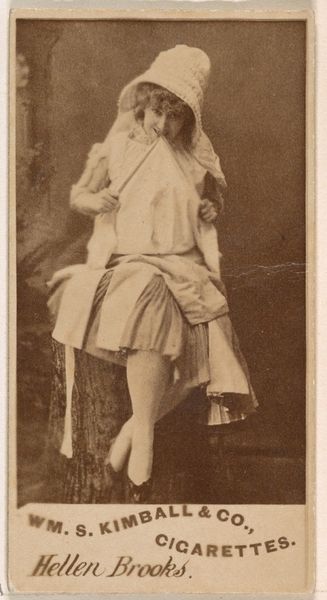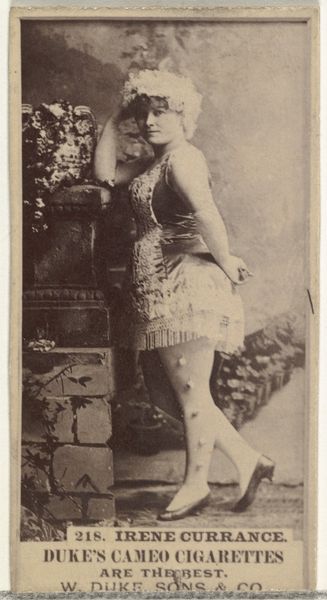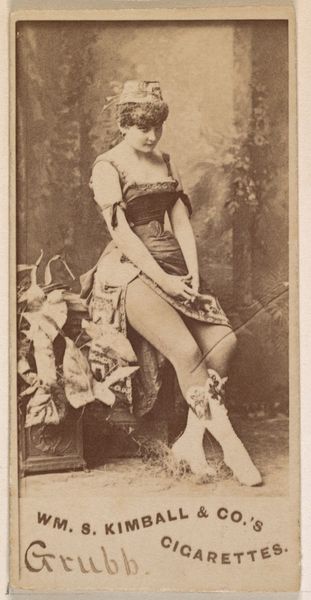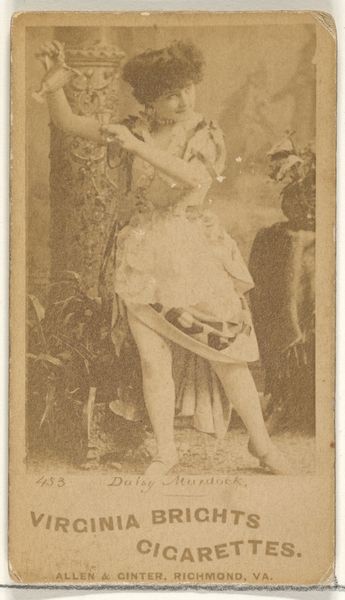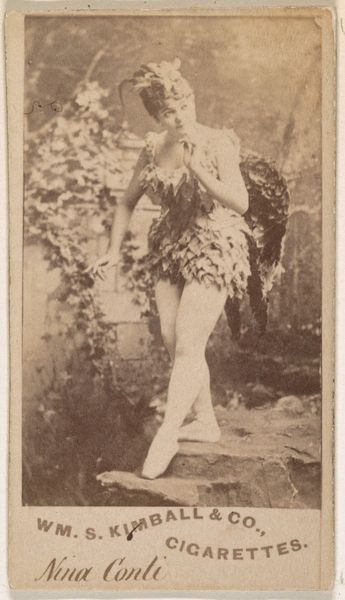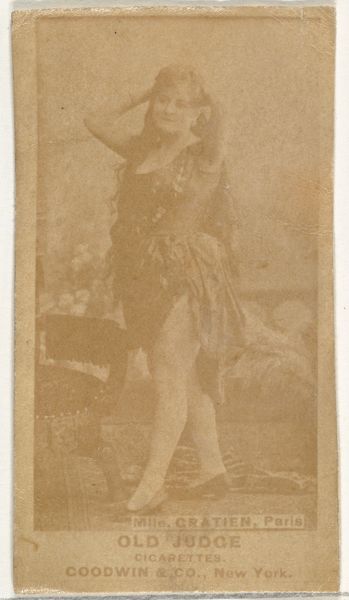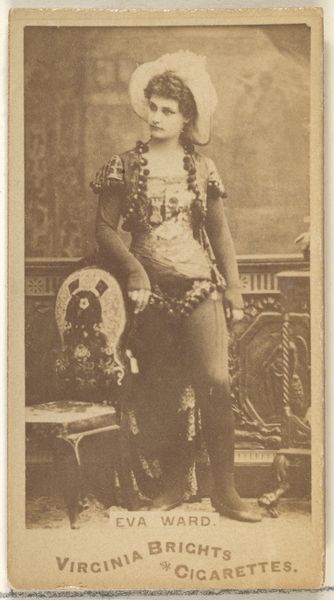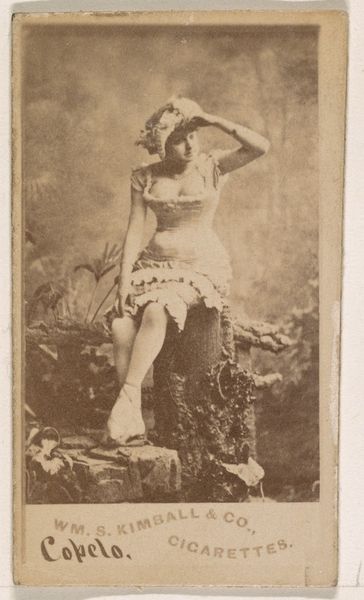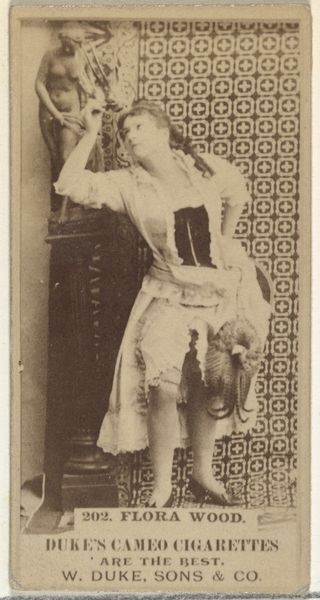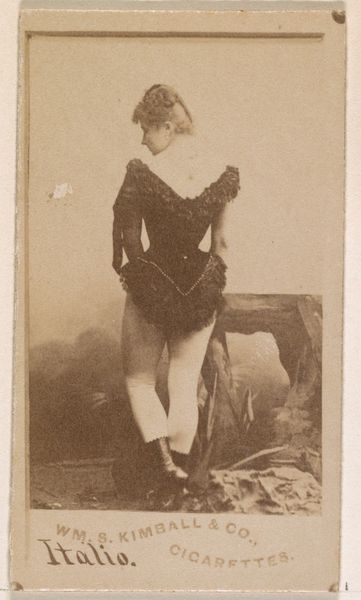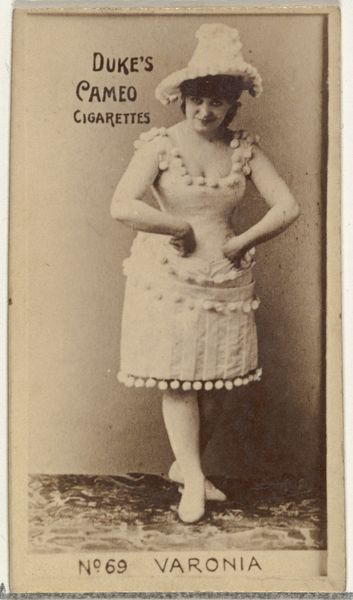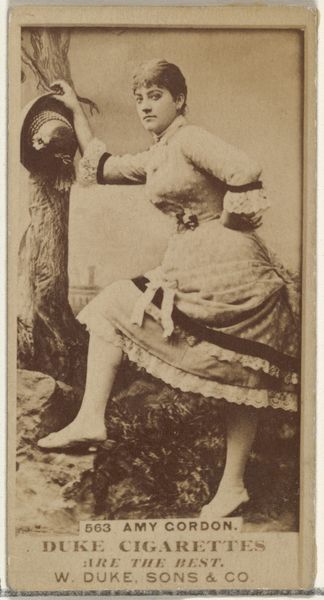
Card Number 85, Daisy Murdoch, from the Actors and Actresses series (N145-2) issued by Duke Sons & Co. to promote Cross Cut Cigarettes 1880s
0:00
0:00
drawing, print, photography
#
portrait
#
drawing
# print
#
photography
#
genre-painting
Dimensions: Sheet: 2 5/8 × 1 7/16 in. (6.6 × 3.7 cm)
Copyright: Public Domain
Editor: Here we have an 1880s print of Daisy Murdoch, "Card Number 85" from the Actors and Actresses series, made to promote Cross Cut Cigarettes. It feels like a very posed photograph that has been reproduced. What strikes you most about this image? Curator: Immediately, the intersection of celebrity, advertising, and tobacco grabs my attention. These cards, inserted into cigarette packs, reveal a lot about the social role of art and imagery in the late 19th century. Consider how the emerging mass culture relied on the popularity of actresses like Murdoch to sell products and associate them with sophistication and allure. The context shifts our understanding of the artwork itself, doesn't it? Editor: It definitely does. So, was it common to use performers to market products? Curator: Absolutely. This type of celebrity endorsement was prevalent and reveals the symbiotic relationship between the entertainment industry, the emerging consumer culture, and advertising. The imagery was often carefully curated to project ideals of beauty and success onto the product. What does the staging suggest about that here? Editor: She’s holding what looks like a chalice, and there's this quasi-classical background... It's like they're trying to give an ordinary cigarette brand some kind of prestige. But knowing it's advertising sort of cheapens it somehow, right? Curator: The act of elevating the mundane – like cigarettes – to a level of high culture or artistic merit through such imagery. Consider then the potential manipulative power that images could exert on a public audience and the role such ephemera played in constructing desire. Now, reflecting on it, does knowing all of this alter how you perceive Daisy Murdoch, and maybe even her agency as a performer? Editor: I think so, because it forces us to consider the actress herself as a commodity, almost secondary to what she’s advertising. Curator: Precisely. It pushes us to question who truly benefits from this sort of artistic production. Editor: Definitely something to consider. I didn't realize how complex something seemingly so simple could be.
Comments
No comments
Be the first to comment and join the conversation on the ultimate creative platform.
